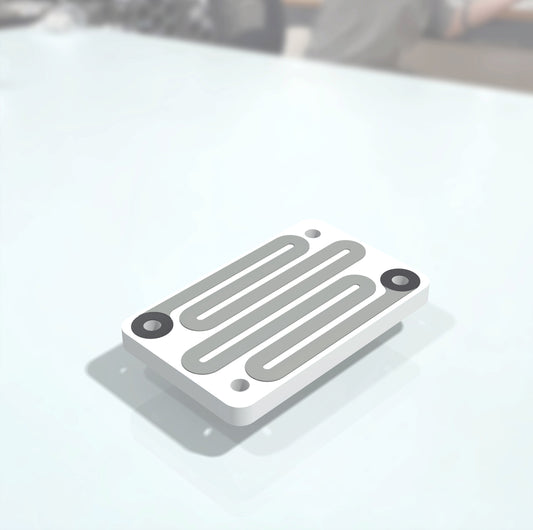Collection: Advanced Sample Heating Stages
Sample heating stages are available with three distinct methods, each optimized for specific experimental requirements.
Pyrolytic Boron Nitride (PBN/PG) heating operates up to ~1000 °C, combining a pyrolytic graphite core for efficient heat transfer with a pyrolytic boron nitride shell that provides purity, electrical insulation, and chemical resistance—ideal for UHV and inert gas environments.
Direct Current heating extends the range to ~1300 °C by passing current directly through the sample or a conductive support, offering rapid response and high efficiency for electrically conductive materials. For the most demanding applications,
Electron Beam heating reaches temperatures up to ~2000 °C, using a focused high-energy beam to deliver non-contact energy transfer, precise spatial control, and minimal contamination, making it well suited for refractory and extreme high-temperature processes.
-
PBN Heating Station for Flag Style Sample Holder Plates
Vendor:Ferrovac AGRegular price From CHF 16,270.00Regular price -
PBN Heater Assembly for Flag Style Sample Holder Plates
Vendor:Ferrovac AGRegular price From CHF 7,450.00Regular price -
DC Heating Station for SHOMDC Sample Heating Plates
Vendor:Ferrovac AGRegular price CHF 9,508.00Regular price -
Flag Style Direct Current Heating
Vendor:Ferrovac AGRegular price From CHF 1,555.44Regular price -
E-Beam Heating Station (P) for Flag Style Plates
Vendor:Ferrovac AGRegular price CHF 15,861.00Regular price -
🔥 Pyrolytic Boron Nitride (PBN/PG) Heater – Ultra-High Purity, High-Temperature Precision Heating
Vendor:UHV Store of Switzerland - Ultra High Vacuum TechnologyRegular price From CHF 1,750.00Regular price -
🔥 Al₂O₃ 99.7% Ceramic Insulation Beads – Shielded 🛡️ Wire Protection
Vendor:UHV Store of Switzerland - Ultra High Vacuum TechnologyRegular price CHF 55.00Regular price







